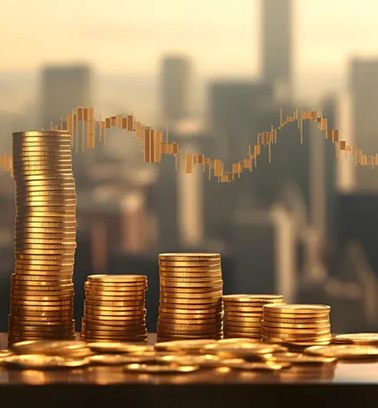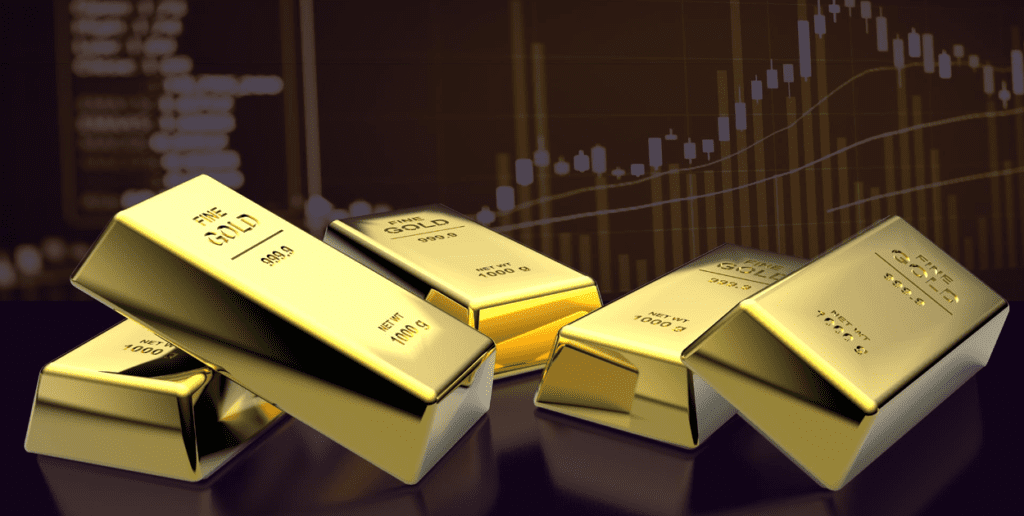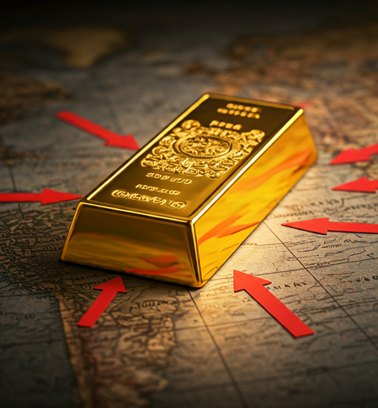In times of economic uncertainty, investors often look for stable assets that can retain their value or even appreciate as other markets fluctuate. Gold has consistently been seen as one of these “safe haven” assets. Unlike stocks or bonds, gold is not directly tied to the performance of a single company, government, or currency. Its value is derived from its intrinsic rarity, historical importance, and universal appeal. This makes gold a popular investment option when economic instability strikes. In this blog, we’ll explore why gold maintains its value during turbulent times, look at historical examples of its strength during downturns, and analyze current trends that are driving gold’s appeal in today’s market.
Why Gold is a Safe Haven
Gold has been viewed as a store of value for thousands of years. Its physical properties—scarcity, durability, and inability to corrode—make it a unique asset. But beyond its physical characteristics, gold carries a level of trust and intrinsic value that few other investments can match. During periods of inflation, currency devaluation, or stock market crashes, gold tends to hold its worth, serving as a hedge against economic decline.
When investors lose confidence in more volatile markets, such as equities or real estate, they often shift their focus to gold as a way to preserve their wealth. The fact that gold isn’t tied to any single economy or monetary system means it can remain valuable even when traditional currencies lose purchasing power. This makes gold an essential part of any diversified portfolio, especially during uncertain economic times.

Sorting Your Gold Items
 Gold’s reputation as a safe haven is not just theoretical; it has proven its resilience time and time again throughout history. Here are a few key examples:
Gold’s reputation as a safe haven is not just theoretical; it has proven its resilience time and time again throughout history. Here are a few key examples:- The Great Depression (1930s): During one of the most severe economic downturns in modern history, many forms of wealth were decimated. Stock markets plummeted, and unemployment soared. However, gold prices remained stable and even increased during this period, providing a critical store of value for investors. The U.S. government’s decision to abandon the gold standard in 1933 led to a rise in the price of gold, further cementing its role as a safe asset during periods of financial upheaval.
- The 2008 Global Financial Crisis: During the financial meltdown of 2008, when global stock markets crashed, gold prices soared. Investors fled to gold as the banking system teetered on the brink of collapse, and gold prices reached a peak of over $1,000 per ounce for the first time. This trend continued in the years following the crisis, as the uncertainty of economic recovery kept demand for gold high.
- COVID-19 Pandemic (2020): The onset of the COVID-19 pandemic saw a sudden and sharp downturn in global markets. As countries locked down and economic activity slowed, investors turned to gold for stability. In August 2020, gold reached an all-time high of over $2,000 per ounce, reflecting its status as a reliable store of wealth during crisis periods.
These examples demonstrate gold’s ability to not only retain value but to also act as a refuge during economic crises when other investments are losing ground.
Current Market Trends: How the Global Market is Influencing Gold Prices
 In the present-day economic landscape, there are several factors driving the demand for gold and influencing its price.
In the present-day economic landscape, there are several factors driving the demand for gold and influencing its price.- Inflation Concerns: With rising inflation rates around the globe, many investors are turning to gold as a way to preserve their purchasing power. Gold has historically been seen as an effective hedge against inflation because its value tends to rise as the cost of goods and services increases.
- Geopolitical Instability: Ongoing geopolitical tensions, such as trade disputes, military conflicts, and political uncertainty, have contributed to economic volatility. In times of geopolitical instability, investors often turn to gold because it is seen as less vulnerable to global disruptions.
- Weakening of Currencies: As central banks around the world have taken measures to stimulate economies through lower interest rates and increased money supply, some currencies have experienced devaluation. When the value of currencies falls, the relative value of gold tends to rise, making it a preferred investment.
- Central Bank Gold Reserves: Many central banks have increased their gold reserves over recent years, signaling their belief in gold as a stable asset. This growing demand from central banks has contributed to upward pressure on gold prices.
With these trends in play, the demand for gold continues to rise as both institutional and individual investors seek to safeguard their wealth during uncertain economic times.
Conclusion
Gold has consistently proven itself to be a reliable and valuable asset, particularly in periods of economic instability. Whether it’s inflation concerns, stock market volatility, or global uncertainty, gold has a unique ability to maintain or increase its value when other assets falter.
If you’re looking to protect your wealth in today’s unpredictable financial climate, now is the time to consider buying or investing in gold. Visit our store to explore a variety of gold options, from fine jewelry to gold bars and coins. Our expert team is here to help you choose the best investment to safeguard your financial future.

 Gold’s reputation as a safe haven is not just theoretical; it has proven its resilience time and time again throughout history. Here are a few key examples:
Gold’s reputation as a safe haven is not just theoretical; it has proven its resilience time and time again throughout history. Here are a few key examples: